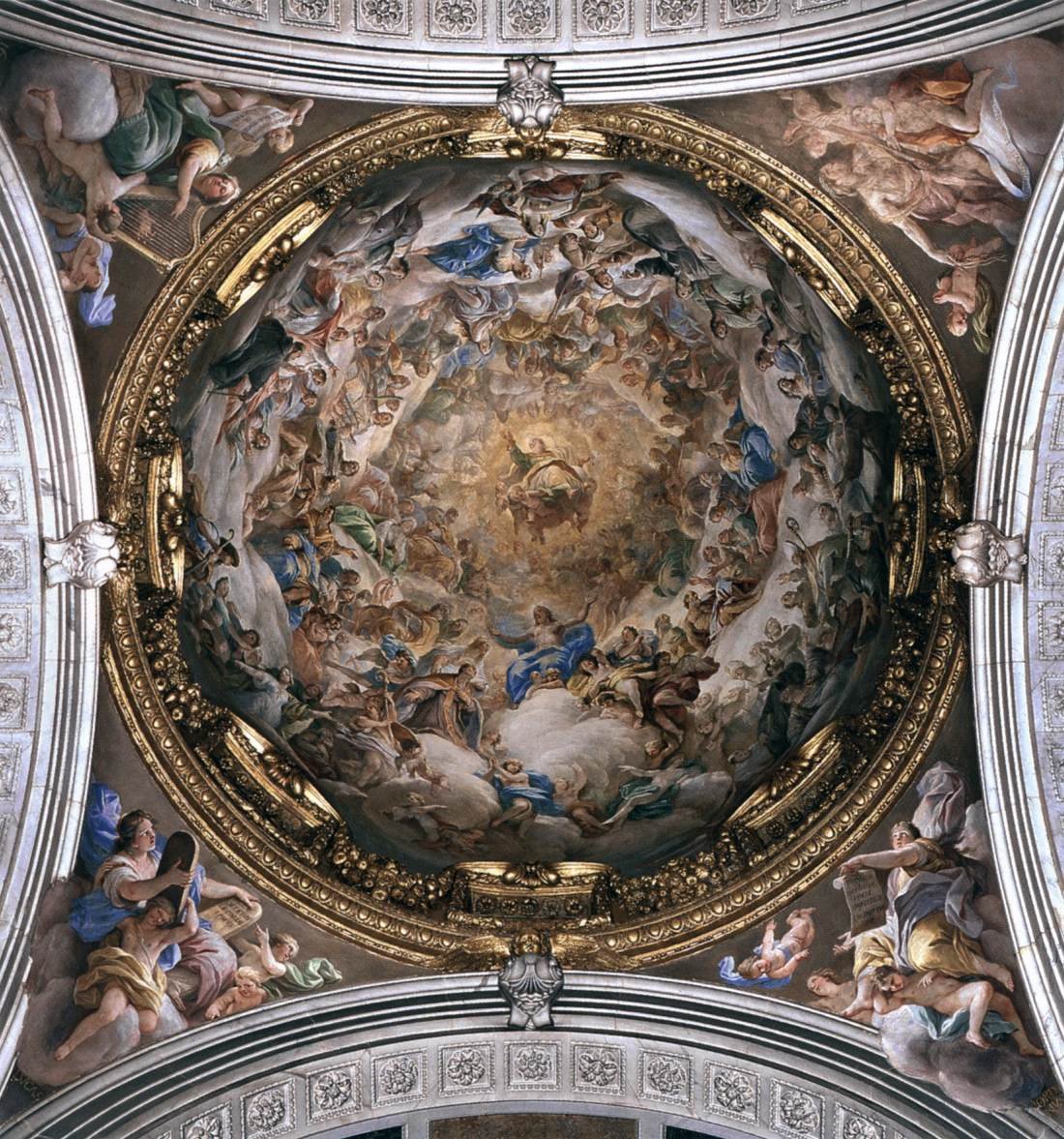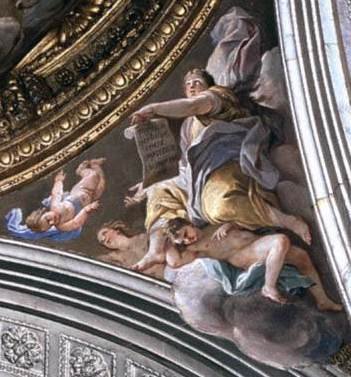LUCA GIORDANO
(Naples, 1634 – 1705)
Allegory of the Preaching of the Divine Word
(Sketch for a Spandrel of the Corsini Chapel in
Santa Maria del Carmine, Florence)
Oil on canvas
19 ⅛ x 15 ⅛ inches (48.6 x 38.5 cm)
Provenance:
(Probably) Andrea and Lorenzo Del Rosso, Florence, by 1689
Christie’s, London, 12 December 1985, lot 221; where acquired by:
Stanley Moss, Riverdale-on-Hudson, until 2024.
Exhibited:
“Luca Giordano: Maestro barocco a Firenze,” Palazzo Medici Riccardi, Florence, 30 March – 5 September 2023.
Literature:
Oreste Ferrari and Giuseppe Scavizzi, Luca Giordano, Naples, 1966, vol. 2, p. 105, vol. 3, p. 194.
Oreste Ferrari and Giuseppe Scavizzi, Luca Giordano: L’Opera Completa, Naples, 1992, vo. 1, p. 301, cat. no. A300, vol. 2, fig. 403.
Brigitte Daprà, in Luca Giordano: 1634–1705, exh. cat., Naples, 2001, p. 240, under cat. no. 76.
Donatella Livia Sparti, “Ciro Ferri and Luca Giordano in the Gallery of Palazzo Medici Riccardi,” Mitteilungen des Kunsthistorischen Institutes in Florenz, vol. 47, no. 1 (2003), p. 220, note 196.
Elena Fumagalli, “Luca Giordano a Firenze: dipinti e ‘macchie,’” in Gli Uffizi e il territorio: bozzetti di Luca Giordano e Taddeo Mazzi per due grandi complessi monastici, ed. Alessandra Griffo and Maria Matilde Simari, Florence, 2017, p. 19.
Maria Matilde Simari, “Tre ‘pensieri’ fiorentini del Signor Luca Giordano per la cupola Corsini al Carmine,” in Gli Uffizi e il territorio: bozzetti di Luca Giordano e Taddeo Mazzi per due grandi complessi monastici, ed. Alessandra Griffo and Maria Matilde Simari, Florence, 2017, p. 47, fig. 15.
Silvia Benassai in Luca Giordano: Baroque Master in Florence, exh. cat., ed. Riccardo Lattuada, Giuseppe Scavizzi, Valentina Zucchi, Florence, 2023, p. 102, cat. no. 11.
Giordano’s major public commission in Florence was his fresco decoration of the Chapel devoted to Saint Andrea Corsini in Santa Maria del Carmine. This grisaille oil sketch is preparatory for one of the four pendentives around the mural decoration of the cupola of the chapel depicting the Allegory of the Divine Word. Our sketch is a primo pensiero (or first idea) illustrating one of the allegories of saint Andrea Corsini’s virtues. It has been thought to be the work listed in the 1689 inventory of Andrea and Lorenzo Del Rosso, friends of Giordano with whom the artist stayed during his time in Florence.[i] A letter by Andrea of 1682 refers to what Giordano termed a macchia—a rough sketch—for the project, which was commissioned by the cousins Bartolomeo and Neri Corsini to celebrate their ancestor, who had been canonized in 1629. Andrea wrote: “The gentleman Luca Giordano is with me at home, and he has made the model of the cupola in a small painting that he calls a macchia, based on which it appears the finished piece will indeed be beautiful.”[ii]
Here and in each of the pendentives in Santa Maria del Carmine, a female figure bears a cartouche or stone slab inscribed with Biblical passages from the psalms or the letters of Saint Paul. The present sketch differs slightly in composition from the final painting (Figs. 1-2). In the corresponding mural the allegorical figure holds an excerpt in Latin from the letter of Saint Paul to Timothy on the significant of preaching and spreading the faith: “Praedica verbum, insta opportune, importune, argue, increpa, obsecra in ogni longanimitate et doctrina.”
Painting in monochrome is part of a longstanding tradition in the history of European art of creating images devoid of color. Giordano’s decision here to paint in black and white against a prepared ground was undoubtedly intended as a display of his virtuosity. His expert skill in describing the forms—modelled only in light and shadow—would have greatly excited its original owner and continues to impress today.
Fig. 1. Luca Giordano, Cupola of the Corsini Chapel, Santa Maria del Carmine, Florence.
Fig. 2. Luca Giordano, Detail of the pendentive in the
Cupola of the Corsini Chapel, Santa Maria del Carmine, Florence.
[i] “La bozzetta orig.e di un angolo della Cup.a fatta al Carm.e alla Capp.a Corsini.”
[ii] Silvia Benassai in Luca Giordano: Baroque Master in Florence, exh. cat., ed. Riccardo Lattuada, Giuseppe Scavizzi, Valentina Zucchi, Florence, 2023, p. 102.


